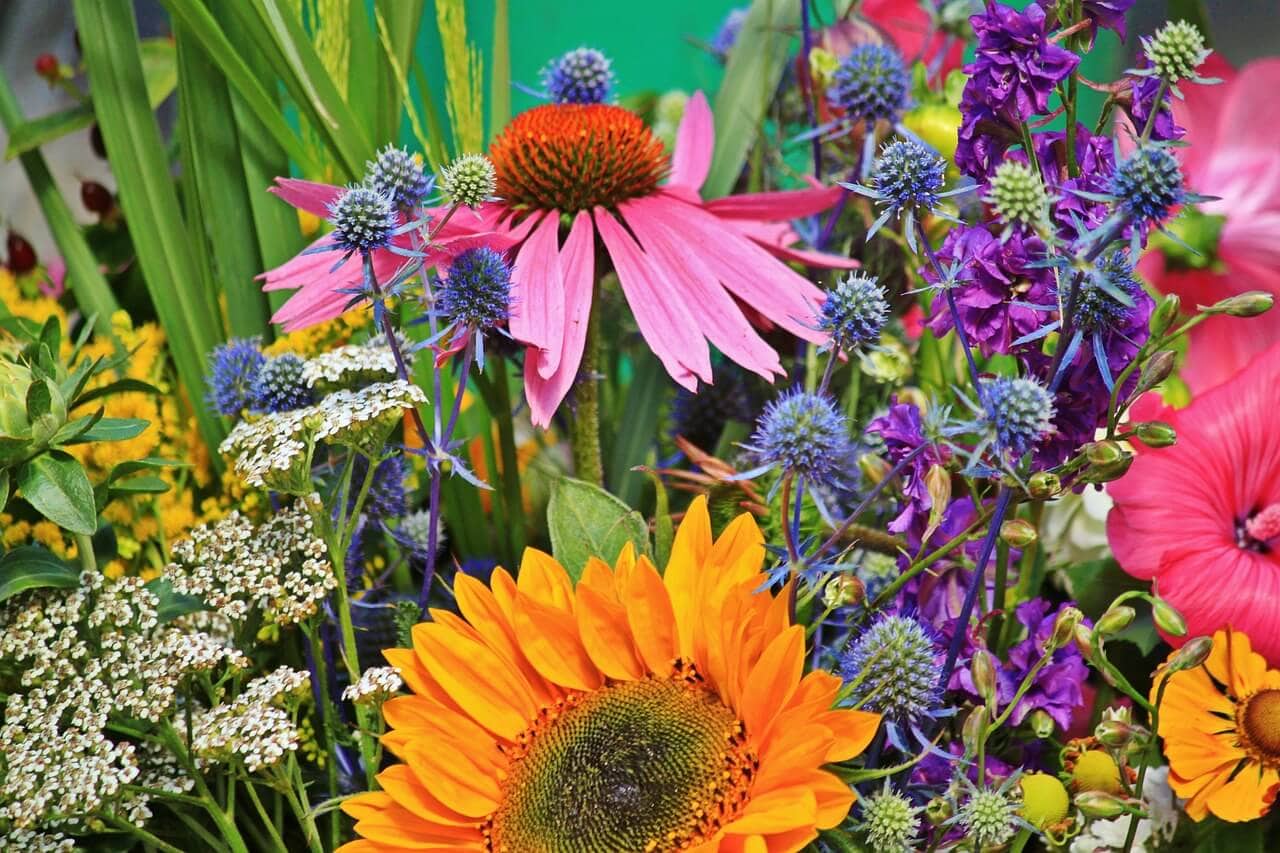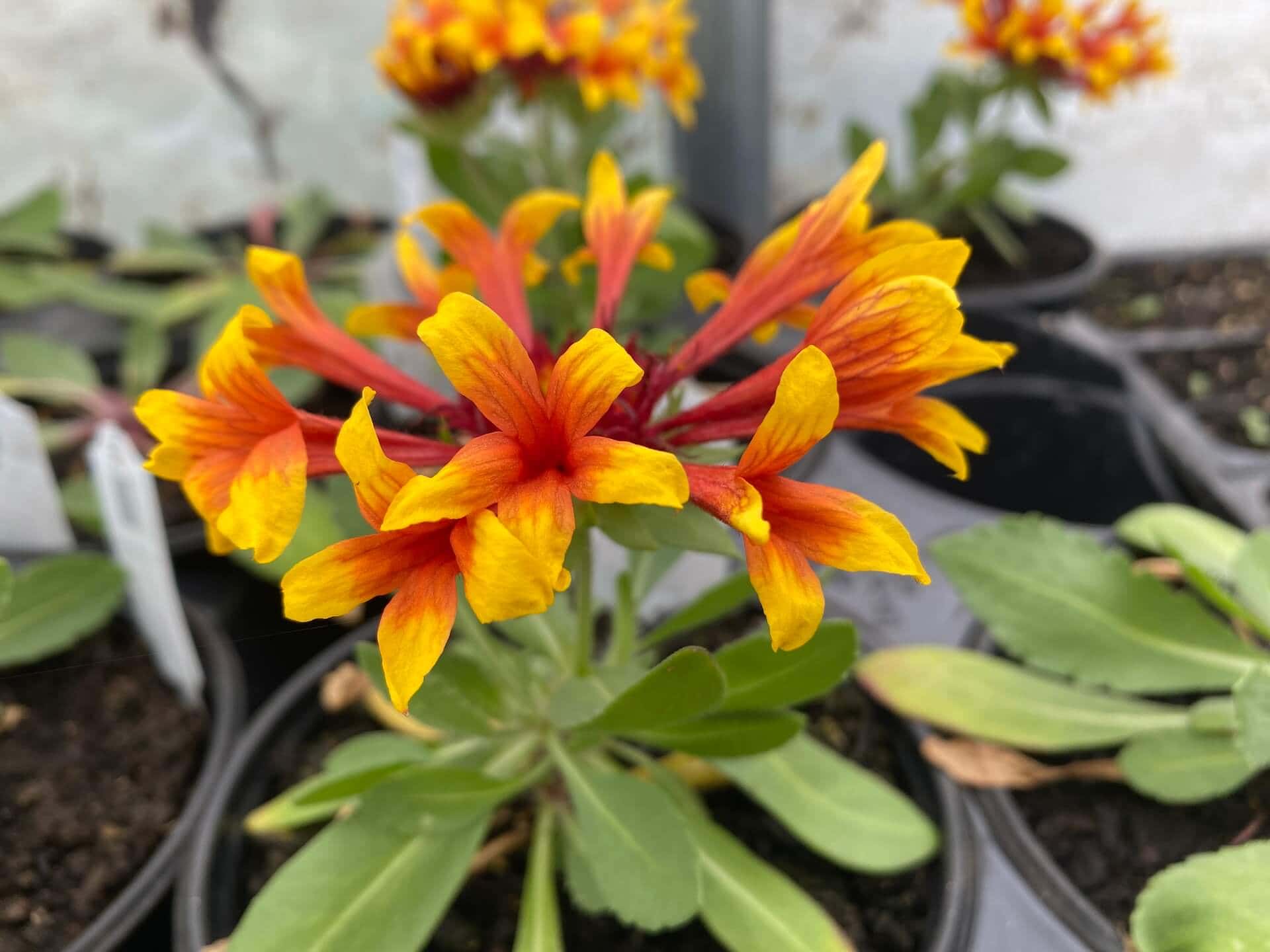This post may contain affiliate links. Probably doesn’t, but it might. It doesn’t cost you anything extra but if you use these links to buy something, we may earn a commission.
It’s a great time to plant perennials! Perennials are plants that come back year after year, often multiplying and spreading. Perennials usually have a shorter bloom period, anywhere from 3 weeks to 3 months, but they reward you by not having to be re-planted each year.
Remember, a garden is always a work in progress, so adding and changing is normal. Perennials can be planted any time from March to November. If you plant in the summer, be sure to water the plants each week. Once established, which takes about six weeks, perennials generally do not need additional watering.
Perennials are some of the easiest flowers to grow successfully, so they are a great way to build your garden. Growing native perennials can be an excellent method to help conserve native species and to provide a colorful, low maintenance addition to any yard. Below are some tips to help you get the most out of your perennial garden.
Set up to succeed in the first year of your perennial garden
The first year that you plant is the “get established year.” Prepare the soil. Good soil preparation is key for a successful perennial garden. Start by removing any large rocks, sticks, or other debris. Set the rocks aside to create a rock feature. Pile any sticks in an area where they can break down into compost. You can pile them into a container, add some leaves, and then top with some soil. Plant some annual flowers or vegetables in the container. The sticks, branches, and leaves will break down into compost that you can add to your garden in the future.
Amend the soil with compost. Compost is great natural fertilizer. This can be aged manure and/or leaves that have broken down. Add a shovelful of compost around the plants in the spring. The compost adds the necessary ingredients to help your plants produce flowers throughout the growing season.
After the compost, add a layer of mulch around the plants. This helps suppress weeds and to retain moisture. You do not have to water as often when you have mulch. Mulch also provides a layer of winter protection to insulate the root system.
Water your plant as soon as you get it in the ground. Then water weekly for the next six weeks if it does not rain. Be sure to water 2-3 times each week in the warmer months if you are planting then.
Five questions to successfully grow perennials
Here are 5 questions to ask:
Is this plant native to my area?
Native in your area means this plant is tough! These are often labelled “Native Perennials.” Native Perennials have the distinction of being hard to kill, drought-resistant, deer-resistant, and pest-resistant, as well as attractive to butterflies and other pollinators. All of these are great qualities that helped the plants survive to show us how fabulous they are. If you are nervous about your ability to care for plants, Native Perennials are excellent.
How long does this plant bloom?
Knowing how long the bloom period is helps you plan out your garden so that you can have different plants blooming at different times. Just because something has a short bloom period—Dicentra, for instance—does not mean you should not include them in the garden. Remember, you can tuck in some annuals—which typically bloom all season—to fill out with color while your perennials settle in.
Is this plant a sun-lover or a shade lover?
Sun or shade or in-between? Knowing where the sun falls in your garden is important, so that you can get the right plants for the right space. Many plants can handle full to half-sun, meaning 6-12 hours of direct sunlight. Shade loving plants can handle full shade—no direct sun at all!—or just a few hours of sun.
Your sunlight will change over the season as the angle of the sun changes. Your sunlight will change over the years as trees grow up around your garden area. It’s a good idea to go check what areas are sunny at 9 am, noon, and 3 pm.
How much does this plant spread?
If your perennial is a multiplier, allow space for that. This gives your plants room to grow. You can fill in with some annual flowers if you think the space is a bit empty. Some perennials do not spread, but grow a little taller and wider each year.
Plants that have come from another country are labelled “invasive” if they spread rapidly and can take over your garden. Plants from the same country are labelled “aggressive” if they spread rapidly and can take over your garden. Check the varieties to see how this particular variety multiplies. Some perennials, like Rudbeckia, multiply very slowly and you will rarely divide the plants. Others, like goldenrod, have some varieties that are extremely aggressive.
All plants need space for their roots to grow and for their leaves to spread out. Crowding your plants can lead to poor plant health. Air flow is one of the best things you can do to keep your plants happy.
Any special watering or feeding requirements?
Native perennials are pretty adaptable, which is why they are great. But if you have a plant that likes it very dry—a sedum, for example—you do not want to plant it by the stream! Most perennials need a little care in the first few weeks of getting planted. After that, they do well in general. If you add compost to your soil, that is usually all the fertilizer needed to keep your plants growing.
HOWEVER—if we get a prolonged dry spell, give the babies a drink! If we get a prolonged rainy spell—hope your drainage is good. We can put water on, but we cannot take it off.





